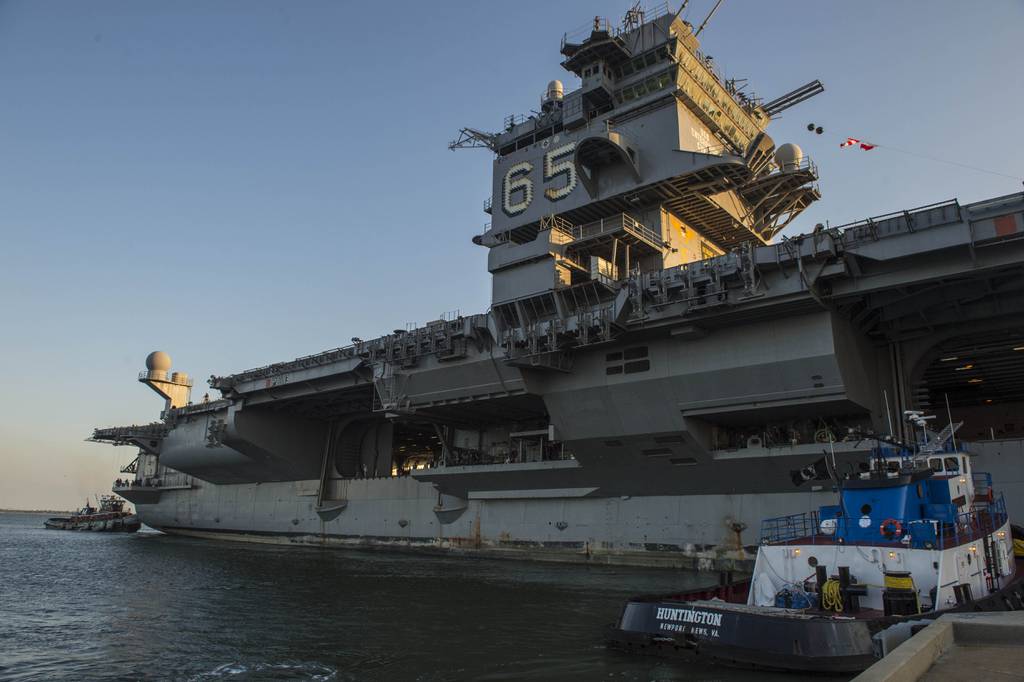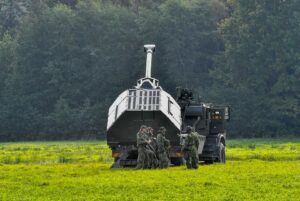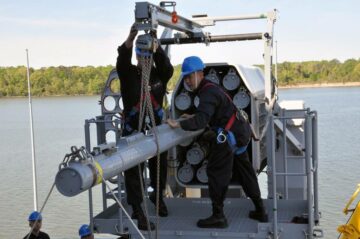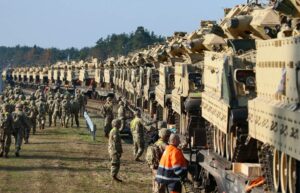
ARLINGTON, Va. — The U.S. Navy has established a new program office to plan and manage aircraft carrier inactivations, defuelings and dismantlements, as the service readies for that work to become more common.
The Navy still hasn’t fully completed the first nuclear-powered aircraft carrier it decommissioned: the former Enterprise was inactivated and defueled at HII’s Newport News Shipbuilding from 2013 through 2018, but the hull — with contaminated components still inside — remains at an HII pier.
The Navy determined this fall it would send Enterprise to a commercial yard for dismantling and disposal rather than tie up its own public shipyards with the work.
Rear Adm. Jim Downey, who previously served as the Program Executive Officer for Aircraft Carriers and now awaits Senate confirmation to lead Naval Sea Systems Command, said the Navy spent a decade working through its plans for Enterprise. It won’t have that kind of time with the Nimitz class: In just two years, carriers will begin retiring one after another — Nimitz is planned to decommission in fiscal 2026, Dwight D. Eisenhower in FY27, and the class should continue decommissioning at a rate of one ship about every four years after that.
Downey, speaking at an American Society for Naval Engineers conference here, said the Navy stood up a program office within the last couple months to work with industry, government agencies like the Department of Energy, and other groups to plan for this upcoming workload and ensure a workforce is in place.
“The point of a new program office and acquisition strategy is, do we think we have untapped capacity right now, looking at our shipbuilding? And in general, you could conclude, with COVID impacts on the workforce, not all of our programs being on schedule, that no, we do not. So we need to do some things a bit differently,” the admiral said.
He said the strategy will be to defuel the carriers “where we fuel and defuel nuclear carriers” —a reference to Newport News Shipbuilding, which both builds the carriers and does the mid-life refueling work — and then dismantle the carriers at a different commercial yard.
He noted the Navy’s four public shipyards that maintain nuclear-powered carriers and submarines do not have excess capacity to help with the inactivation and dismantling work, which may take four or more years per ship and cost billions of dollars.
“Considering that much money, that much engagement with industry and military entities, other U.S. government [agencies], you really need that team focus” and therefore a dedicated program office, Downey said. ‘We don’t want to get this wrong.”
Megan Eckstein is the naval warfare reporter at Defense News. She has covered military news since 2009, with a focus on U.S. Navy and Marine Corps operations, acquisition programs and budgets. She has reported from four geographic fleets and is happiest when she’s filing stories from a ship. Megan is a University of Maryland alumna.
- SEO Powered Content & PR Distribution. Get Amplified Today.
- PlatoData.Network Vertical Generative Ai. Empower Yourself. Access Here.
- PlatoAiStream. Web3 Intelligence. Knowledge Amplified. Access Here.
- PlatoESG. Carbon, CleanTech, Energy, Environment, Solar, Waste Management. Access Here.
- PlatoHealth. Biotech and Clinical Trials Intelligence. Access Here.
- Source: https://www.defensenews.com/naval/2023/11/29/navy-creates-program-office-to-manage-nuclear-carrier-defuelings/
- :has
- :is
- :not
- $UP
- 11
- 2013
- 2018
- 2026
- 70
- a
- About
- acquisition
- After
- agencies
- aircraft
- All
- American
- an
- and
- Another
- AS
- At
- BE
- become
- begin
- being
- billions
- Bit
- both
- Budgets
- builds
- but
- Capacity
- carriers
- class
- commercial
- Common
- components
- conclude
- Conference
- confirmation
- continue
- Cost
- could
- Couple
- covered
- Covid
- creates
- decade
- dedicated
- Defense
- Department
- Department of Energy
- determined
- different
- differently
- dismantling
- disposal
- do
- does
- dollars
- Dont
- energy
- engagement
- Engineers
- ensure
- Enterprise
- entities
- established
- Every
- excess
- executive
- Executive Officer
- Fall
- Filing
- First
- Fiscal
- Focus
- For
- Former
- four
- from
- Fuel
- General
- geographic
- get
- Government
- government agencies
- Group’s
- Have
- help
- here
- HTTPS
- images
- Impacts
- in
- industry
- inside
- IT
- ITS
- Jim
- jpg
- just
- Kind
- Last
- lead
- like
- looking
- maintain
- manage
- Marine
- Maryland
- May..
- Megan
- Military
- money
- months
- more
- much
- Need
- New
- news
- no
- noted
- now
- nuclear
- of
- Office
- Officer
- on
- ONE
- Operations
- or
- Other
- our
- own
- per
- Place
- plan
- planned
- plans
- plato
- Plato Data Intelligence
- PlatoData
- Point
- previously
- Program
- Programs
- public
- Rate
- rather
- really
- reference
- Refueling
- remains
- Reported
- reporter
- right
- s
- Said
- schedule
- SEA
- Senate
- send
- served
- she
- ship
- should
- since
- So
- Society
- some
- speaking
- spent
- Still
- Stories
- Strategy
- Systems
- Take
- team
- than
- that
- The
- then
- therefore
- things
- think
- this
- Through
- TIE
- time
- to
- two
- u.s.
- U.S. government
- U.S. Navy
- university
- University of Maryland
- untapped
- upcoming
- want
- was
- we
- when
- which
- WHO
- will
- with
- within
- Work
- Workforce
- working
- would
- Wrong
- years
- you
- zephyrnet












